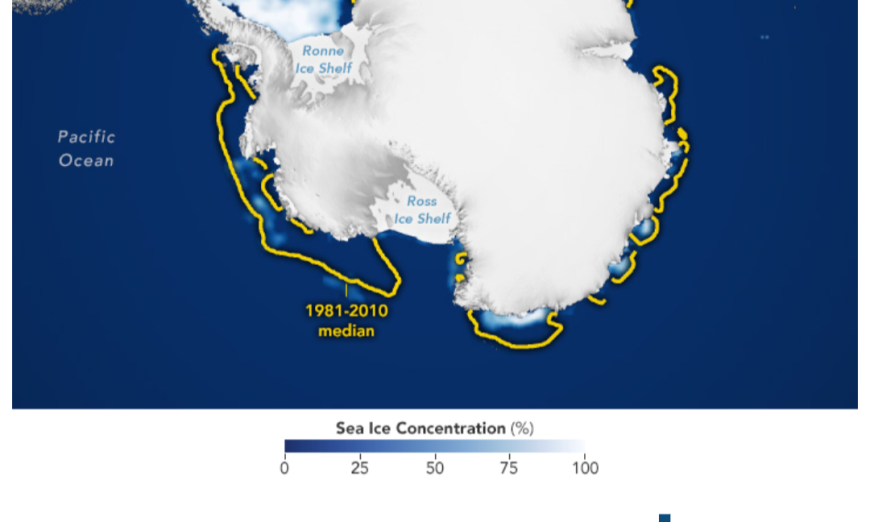February 21, 2023.

In February 2023, sea ice around Antarctica reached the lowest extent ever observed since the start of the satellite record in 1979.
But despite several recent years of low extents, the long-term trend for sea ice in southern polar waters is essentially flat; it is the declines in sea ice at the other pole—in the Arctic—that are pushing the global sea ice trend downward.
Sea ice around Antarctica reached its lowest extent on February 21, 2023, at 1.79 million square kilometers (691,000 square miles).
That’s 130,000 square kilometers (50,000 square miles) below the previous record-low reached on February 25, 2022—a difference that equates to an area about the size of New York state. It marks the second time that scientists observed the ice shrinking below 2 million square kilometers.
The map above shows the ice extent on the day of its record low. To determine extent, scientists project satellite observations of sea ice onto a grid and then add up the total area of each cell that is at least 15 percent ice-covered. The yellow outline shows the median sea ice extent for February from 1981–2010. A median is the middle value; that is, half of the extents were larger than the yellow line and half were smaller.
Amid year-to-year variability, sea ice trends in the Antarctic prior to 2016 were generally headed slightly upward in all months. Since then, several years hit new record lows, including 2017, 2022, and now 2023.
“There is some discussion about the Antarctic sea ice undergoing a regime-shift since 2016 toward a generally lower extent, and that maybe this could be a response to global warming; that is, the warming signal is starting to be seen in the Antarctic sea ice above the year-to-year variability,” said Walt Meier, a sea ice scientist at the National Snow and Ice Data Center (NSIDC). “But it is hard to say at this point if it is a real shift and response to warming, or just a temporal multi-year variation.”
NASA Observatory images by Lauren Dauphin, using data from the National Snow and Ice Data Center. Story by Kathyrn Hansen.
Source, NASA.

